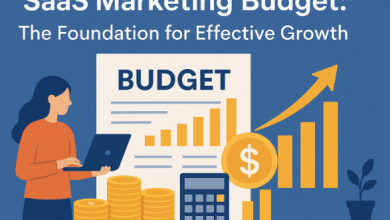Gold Price Forecast 2025: What Investors Should Expect

Gold has long been a cornerstone of investment portfolios, valued for its role as a safe-haven asset, especially during times of economic uncertainty or geopolitical tension. As we look ahead to 2025, many investors and market analysts are keen to understand the potential trajectory of gold prices. This article provides a data-driven outlook on the gold market, exploring the key economic, geopolitical, and supply-demand factors that could influence its value in the coming year. Our aim is to help you make informed decisions by presenting a balanced view of potential bullish and bearish scenarios.
Understanding Gold’s Enduring Value
Gold’s appeal stems from its unique properties. Unlike paper currency, it cannot be printed, making it a finite resource. It has historically served as a hedge against inflation, a store of value during economic downturns, and a diversifier in investment portfolios. Its global market ensures liquidity, and its tangible nature offers a sense of security that other assets might not. For centuries, this precious metal has maintained its status as a reliable asset, influencing its future price outlook.
Key Factors Influencing Gold Prices in 2025
The gold price forecast for 2025 is shaped by a complex interplay of global forces. Understanding these factors is crucial for any investor considering the gold market outlook.
Global Economic Outlook
The health of the global economy plays a significant role in gold’s performance.
- Inflation: Persistent inflation tends to boost gold’s appeal as investors seek to protect their purchasing power. If inflation remains elevated or resurges in 2025, demand for gold as a hedge could increase, pushing its price higher. Conversely, a rapid decline in inflation could reduce this demand.
- Interest Rates: Central bank policies, particularly those of the U.S. Federal Reserve, heavily influence gold prices. Higher interest rates make yield-bearing assets like bonds more attractive, potentially reducing gold’s appeal since it does not offer a yield. If central banks begin to cut rates in 2025, gold could become more attractive, leading to a potential rise in its price.
- Economic Growth/Recession Fears: A slowdown in global economic growth or the threat of a recession often drives investors towards safe-haven assets like gold. During such periods, the demand for gold typically increases, supporting its price.
Geopolitical Landscape
Geopolitical risks and uncertainties are powerful drivers of gold demand. Global conflicts, trade tensions, and political instability can heighten investor anxiety, leading to a flight to safety. In 2025, any escalation of existing conflicts or emergence of new geopolitical flashpoints could significantly bolster gold’s safe-haven appeal, contributing to an uptrend in its price.
US Dollar Strength
There is generally an inverse relationship between the strength of the U.S. dollar and the price of gold. When the dollar strengthens, gold becomes more expensive for holders of other currencies, potentially dampening demand. Conversely, a weaker dollar makes gold more affordable and can lead to an increase in its price. The future trajectory of the dollar, influenced by U.S. economic policy and global trade balances, will be a key determinant for the 2025 gold predictions.
Central Bank Demand
Central banks around the world have been significant buyers of gold in recent years, diversifying their reserves away from traditional currencies. This sustained institutional demand provides a strong underlying support for the gold market. The World Gold Council regularly reports on central bank buying trends, which are a critical indicator for the future gold price. Continued strong buying by central banks in 2025 could provide a solid floor for gold prices.
Supply and Demand Dynamics
The fundamental principles of supply and demand also impact gold’s price.
- Supply: This includes newly mined gold and recycled gold. Significant disruptions in mining operations or changes in recycling rates can affect overall supply.
- Demand: This encompasses jewelry demand, industrial demand, and, crucially, investment demand. Investment demand includes purchases of physical bullion, gold ETFs (Exchange Traded Funds), and other gold-backed assets. A surge in investment interest, perhaps driven by the factors mentioned above, can significantly push the price per troy ounce higher.
Gold Price Forecast 2025: Scenarios and Predictions
Forecasting the exact gold price for 2025 is challenging due to the many variables involved. However, we can outline potential scenarios based on the interplay of the factors discussed.
Bullish Scenario: Gold Reaches New Highs
In a bullish outlook for 2025, gold prices could see a significant rise, potentially reaching new record highs. This scenario would likely be driven by:
- Persistent or Resurgent Inflation: If inflation proves stickier than expected, or if new inflationary pressures emerge, gold’s role as an inflation hedge would be amplified.
- Aggressive Interest Rate Cuts: Should central banks, particularly the Federal Reserve, implement deeper and faster interest rate cuts than currently anticipated, the opportunity cost of holding non-yielding gold would decrease, making it more attractive.
- Escalating Geopolitical Instability: A significant worsening of global conflicts, trade wars, or political crises would drive a strong flight to safety, pushing gold demand and prices upward.
- Weakening US Dollar: A sustained depreciation of the U.S. dollar would make gold more affordable globally, increasing demand.
- Strong Central Bank Buying: Continued robust gold accumulation by central banks would provide a strong demand floor.
Under such conditions, some analysts suggest gold could trade well above current levels, potentially reaching into the $2,500 to $3,000+ per troy ounce range. While a move to $5,000 an ounce is considered an extreme possibility, it would likely require a confluence of severe economic and geopolitical crises, far beyond current expectations.
Bearish Scenario: Price Correction
A bearish outlook for gold in 2025 would see prices decline from current levels. This scenario could unfold if:
- Rapid Disinflation/Deflation: A swift and sustained decline in inflation would reduce the need for gold as an inflation hedge.
- Higher-for-Longer Interest Rates: If central banks maintain higher interest rates for longer than expected, or even raise them further, the appeal of yield-bearing assets would outweigh gold.
- Strong Economic Growth and Stability: A robust global economic recovery coupled with a reduction in geopolitical tensions would diminish gold’s safe-haven appeal.
- Strong US Dollar: A strengthening U.S. dollar would make gold more expensive for international buyers.
- Reduced Central Bank Demand: A significant slowdown or halt in central bank gold purchases could remove a key support for the market.
In this scenario, gold prices could potentially retreat to the $1,800 to $2,000 per troy ounce range, depending on the severity of these factors.
Neutral/Stable Scenario: Consolidation
A more moderate outlook suggests gold prices might consolidate within a relatively stable range in 2025. This scenario would be characterized by:
- Mixed Economic Signals: Moderate inflation, stable but not aggressive interest rate adjustments, and steady economic growth without major shocks.
- Contained Geopolitical Risks: Ongoing but manageable geopolitical tensions that do not escalate into major crises.
- Balanced Supply and Demand: Consistent central bank buying and investment demand, offset by stable supply and other market forces.
In this environment, gold prices might fluctuate within a range, perhaps between $2,000 and $2,300 per troy ounce, reflecting a market that is neither strongly bullish nor bearish.
Expert Outlooks and Consensus
Various financial institutions and commodity analysts offer their own gold price predictions for 2025. While specific figures vary, there’s a general understanding that gold’s future price will largely depend on the global economic trajectory, central bank actions, and geopolitical stability. Many forecasts suggest a continued uptrend or consolidation at elevated levels, reflecting gold’s persistent role in an uncertain global economy. It’s important for investors to remember that these are estimates, not guarantees, and market volatility can lead to rapid price changes.
Is Gold Still a Good Investment for 2025?
The question “Is gold still in for 2025?” is a common one for investors. Gold’s value as an investment asset extends beyond mere price appreciation. It serves as a portfolio diversifier, helping to reduce overall risk, especially during periods when traditional assets like stocks and bonds may underperform. For investors seeking a hedge against inflation, currency devaluation, or geopolitical risks, gold continues to be a relevant asset.
Before making any investment decisions, it’s crucial to evaluate your personal financial goals, risk tolerance, and investment horizon. Gold can play a strategic role in a well-diversified portfolio, but it should be considered as part of a broader investment strategy. For more insights into gold investing, you can explore resources like Gold Investing 4 U.
When to Consider Buying Gold in 2025
Deciding when to buy gold in 2025 depends heavily on your investment strategy and market conditions. Here are some considerations:
- Economic Uncertainty: Periods of heightened economic uncertainty, such as rising inflation concerns or signs of an impending recession, often present opportunities as gold’s safe-haven appeal increases.
- Interest Rate Environment: If central banks signal or begin interest rate cuts, the opportunity cost of holding gold decreases, potentially making it a more attractive investment.
- Geopolitical Tensions: An escalation of global conflicts or political instability can trigger a surge in demand for gold, making it a timely purchase for those seeking protection.
- Dollar Weakness: A weakening U.S. dollar can make gold more appealing to international buyers, potentially driving up its price.
- Dollar-Cost Averaging: For long-term investors, dollar-cost averaging (investing a fixed amount regularly, regardless of price) can be an effective strategy to mitigate volatility and build a position over time.
Long-Term Gold Price Outlook (Beyond 2025)
While our primary focus is the gold price forecast for 2025, it’s worth briefly touching on the longer-term outlook. For 2026 and even towards 2030, many of the same underlying factors will continue to influence gold. Persistent global debt, ongoing geopolitical shifts, and the potential for continued central bank diversification could support gold prices in the long run. Some long-term predictions suggest gold could continue its uptrend, potentially reaching higher levels by 2030, though these forecasts carry greater uncertainty due to the extended time horizon.
Key Takeaways for Investors
- The gold price forecast for 2025 is influenced by a mix of economic, geopolitical, and supply-demand factors.
- Both bullish and bearish scenarios are possible, driven by inflation, interest rates, geopolitical stability, and the U.S. dollar’s strength.
- Gold continues to be a valuable asset for portfolio diversification and as a hedge against uncertainty.
- Staying informed about global economic trends and geopolitical developments is crucial for making informed investment decisions in the gold market.
In conclusion, while no one can predict the future with absolute certainty, understanding the key drivers behind gold’s value allows investors to approach the 2025 gold market outlook with greater confidence. Gold’s role as a timeless asset remains relevant in an ever-changing global landscape.





